6 Biofabricating materials
Learning outcomes
--> Produce at least two grown and/or two crafted materials:
+ Grown materials - Grow a material, experimenting with at least 2 different recipes and variations thereof. Document the process, ingredients, changes, describe and compare the materials
+ Craft materials - Craft a material, experimenting with at least 2 different recipes and variations thereof. Document the process, ingredients, changes, describe and compare the materials
--> Document your recipes, the ingredients and process and if there have been changes, document your unexpected discoveries
--> Name your materials, classify them by typology and display them in a systematic order of samples. EXTRA POINT Submit some of your swatches to the analog material library of your lab. (20cm *20cm aprox)
Inspo
--> Material Driven talk
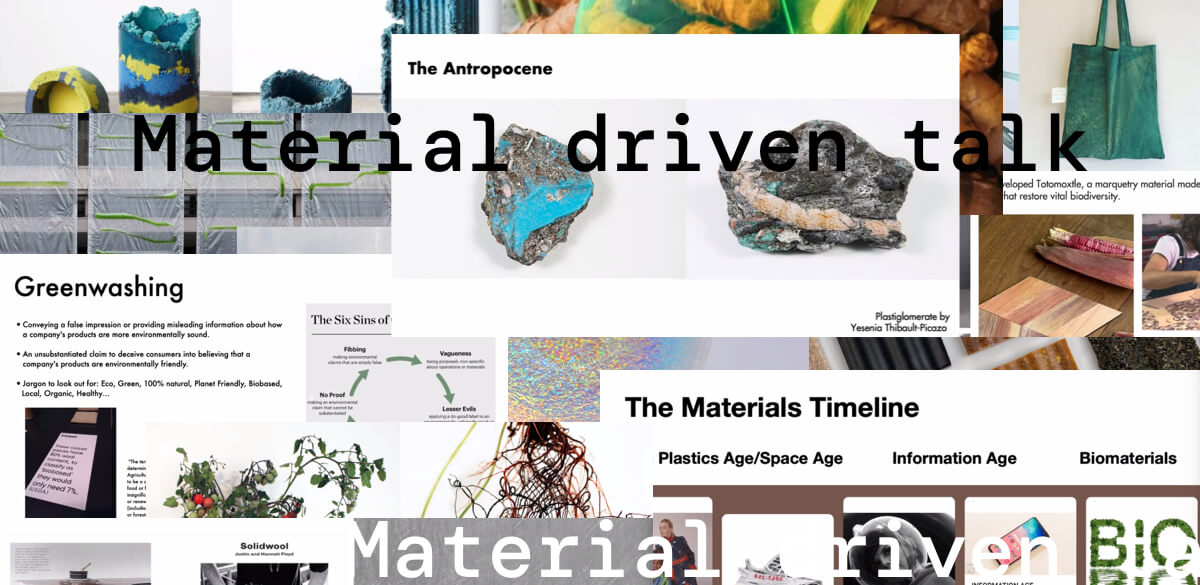
--> Smile Plastics
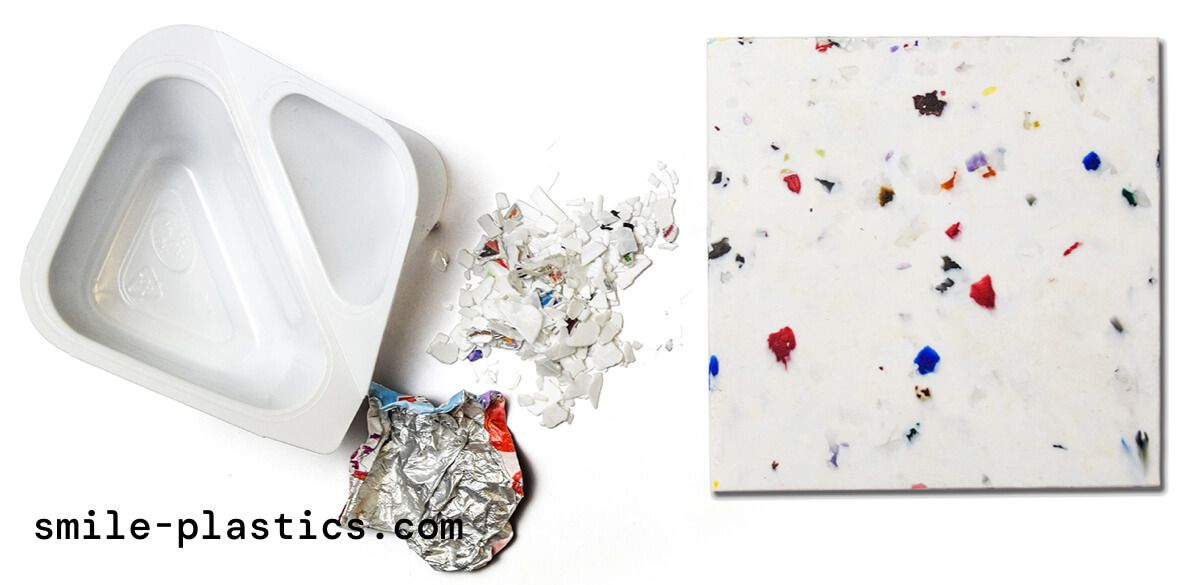
--> Ottan studio making materials with foodwaste

--> Inspired by the following work on plastic, recycling it or biofabricating it

Lecture takeaways
--> We overviewed different techniques to make bioplastics and bioleathers, from different materials, amongst them:
+ Bioplastics can be made out of: alginate, gelatine, algar
+ Bioleathers can be made out of: kombucha, mycelium, fishskin

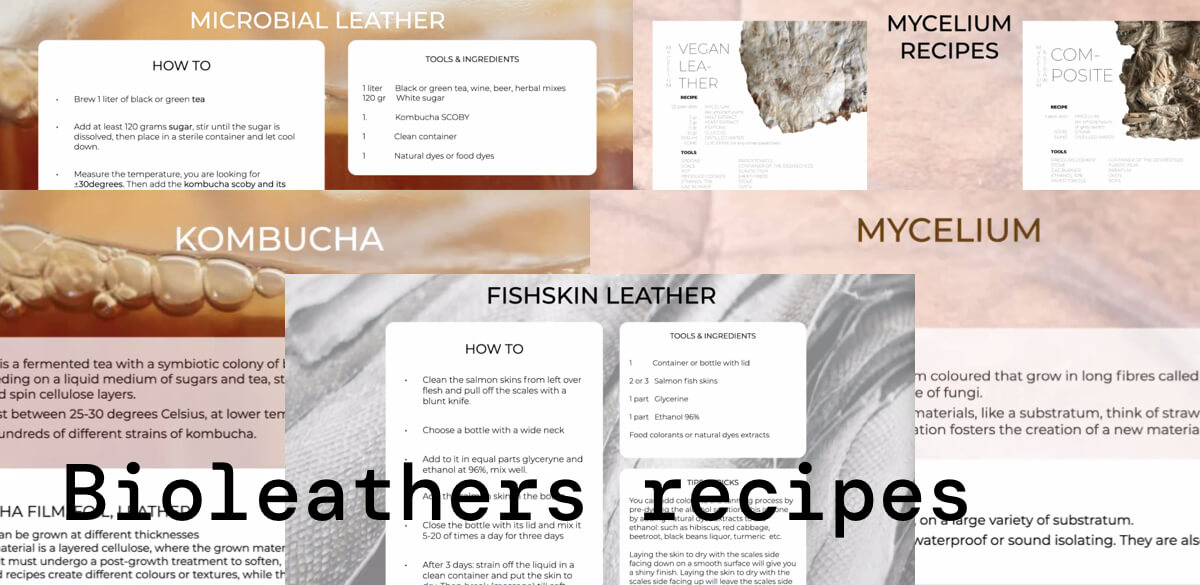
--> Documenting is key when it comes to biofabricating materials

--> Felt very inspired by the Remix El Barrio project, where participants get to learn how to value their own food waste, and recycle them from home.
Grown materials
Mycelium leathers
--> I followed the following mycelium leather recipe

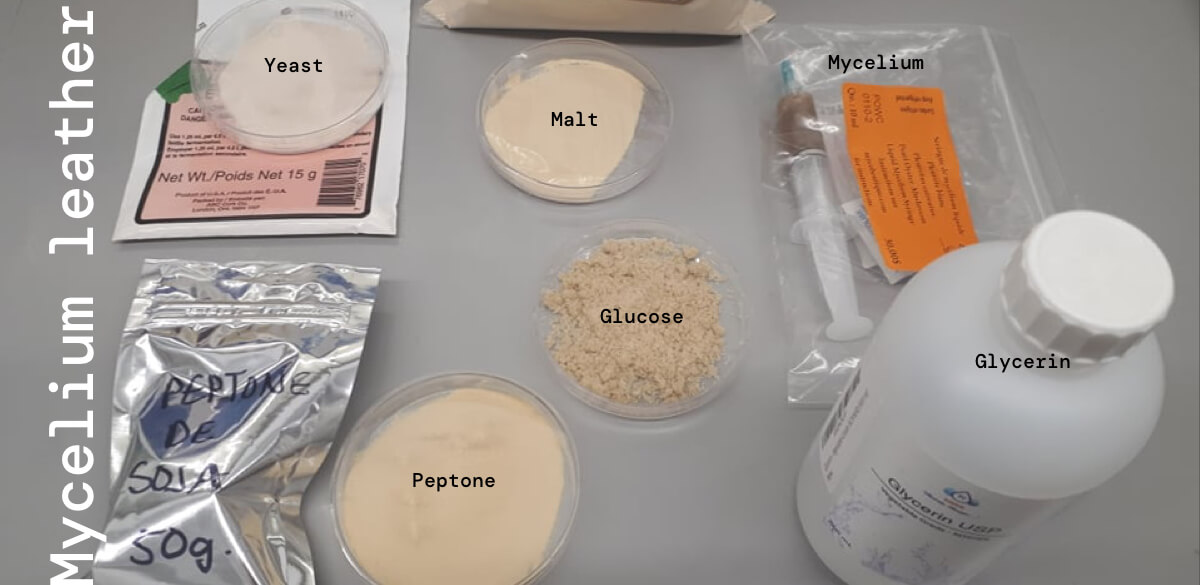
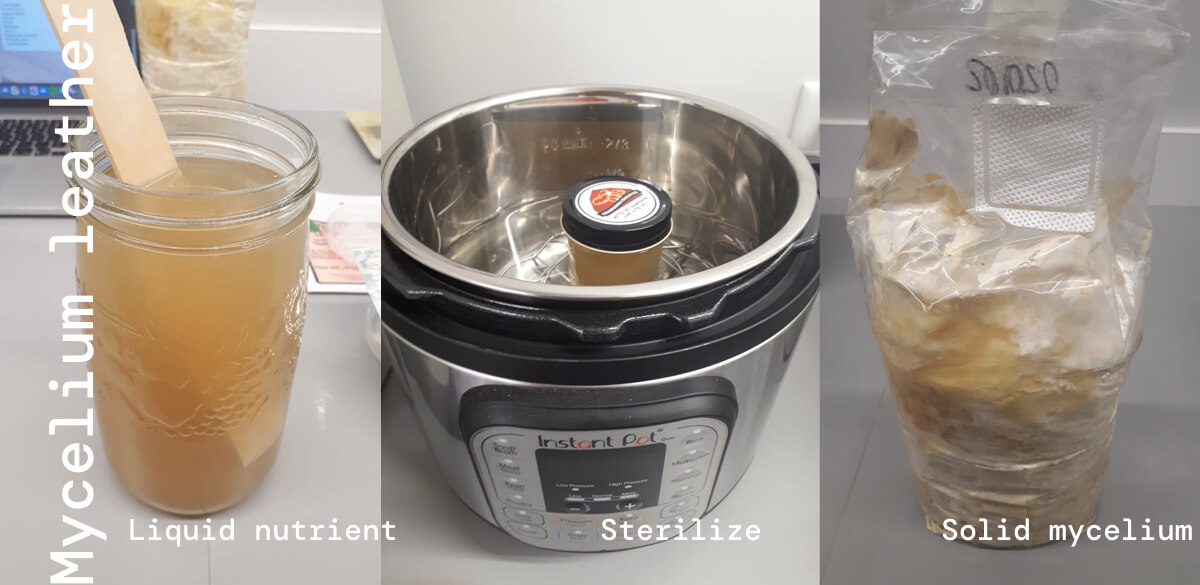
--> Tried 3 different states of mycelium: with liquid mycelium, with the brown part of solid mycelium, with the white part of solid mycelium
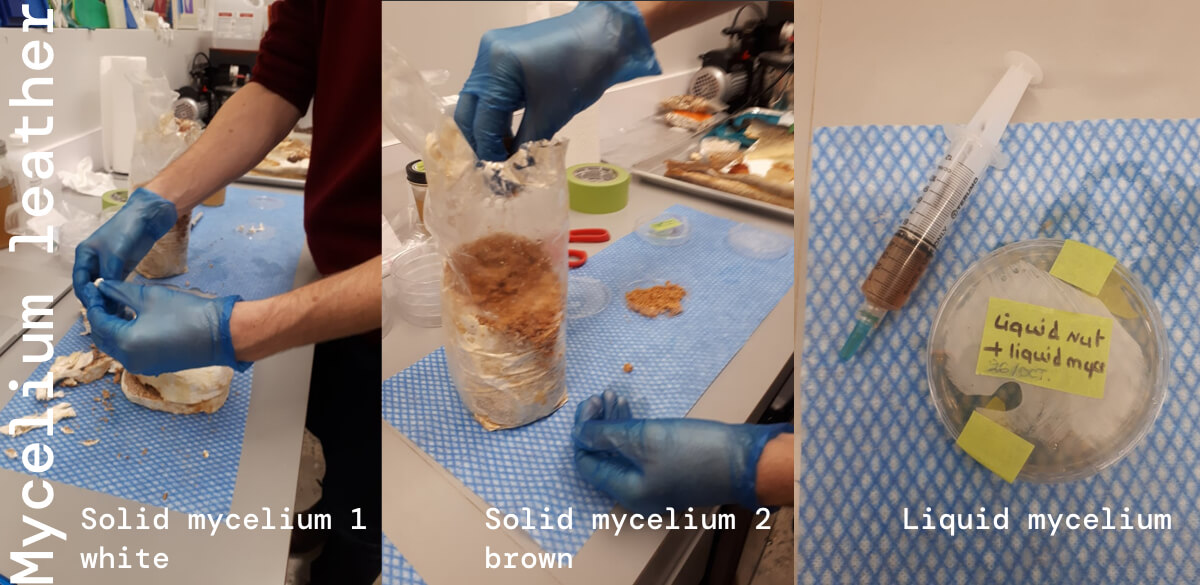
--> results solid white mycelium

--> results liquid syringe mycelium
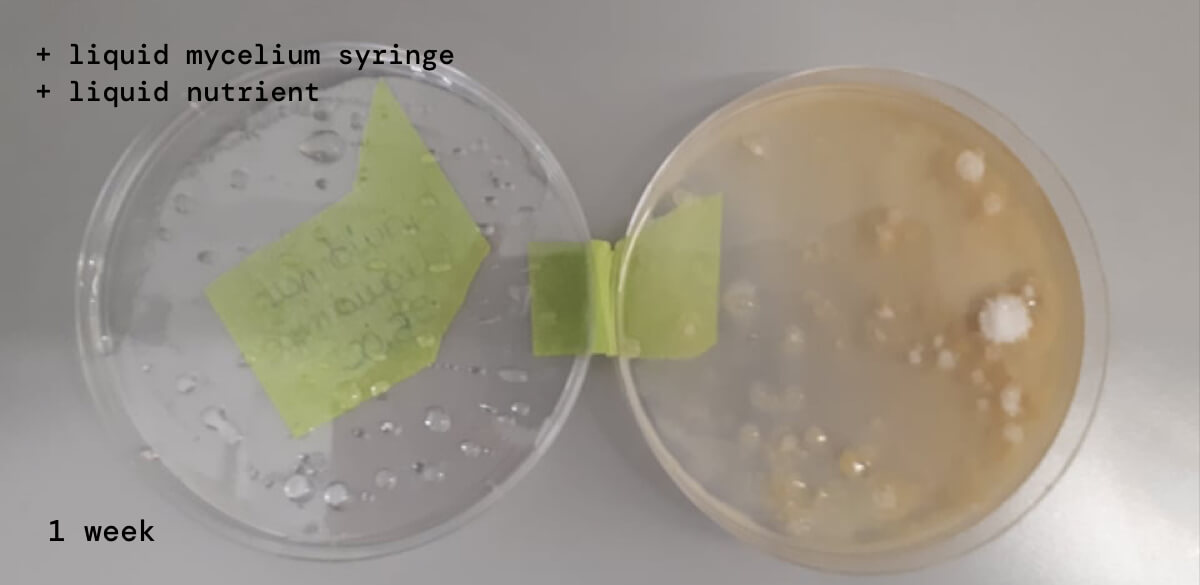
--> results solid brown mycelium
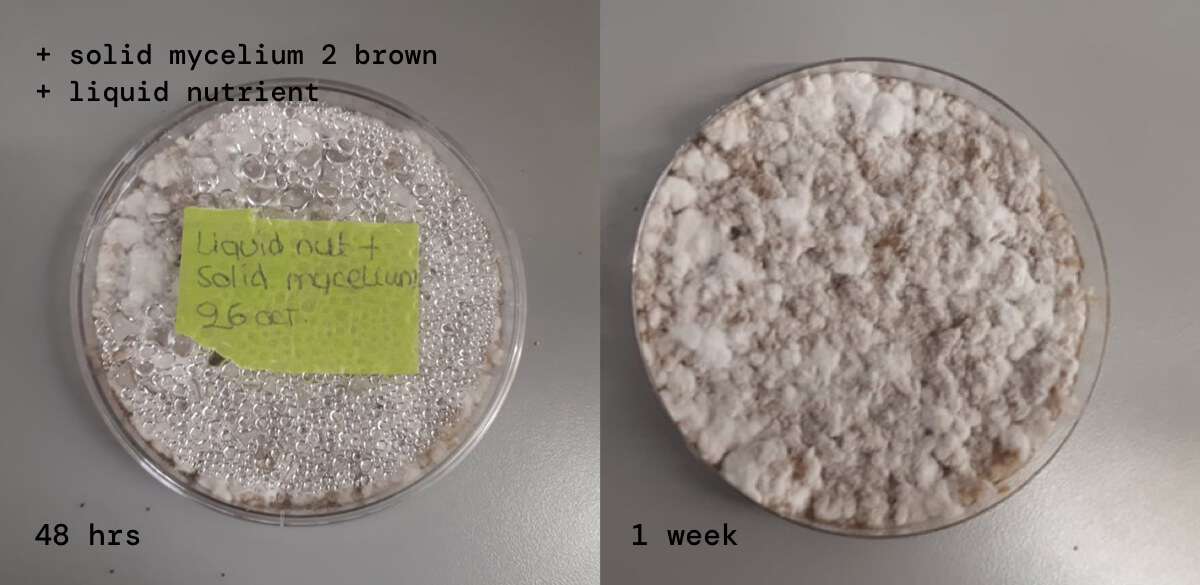

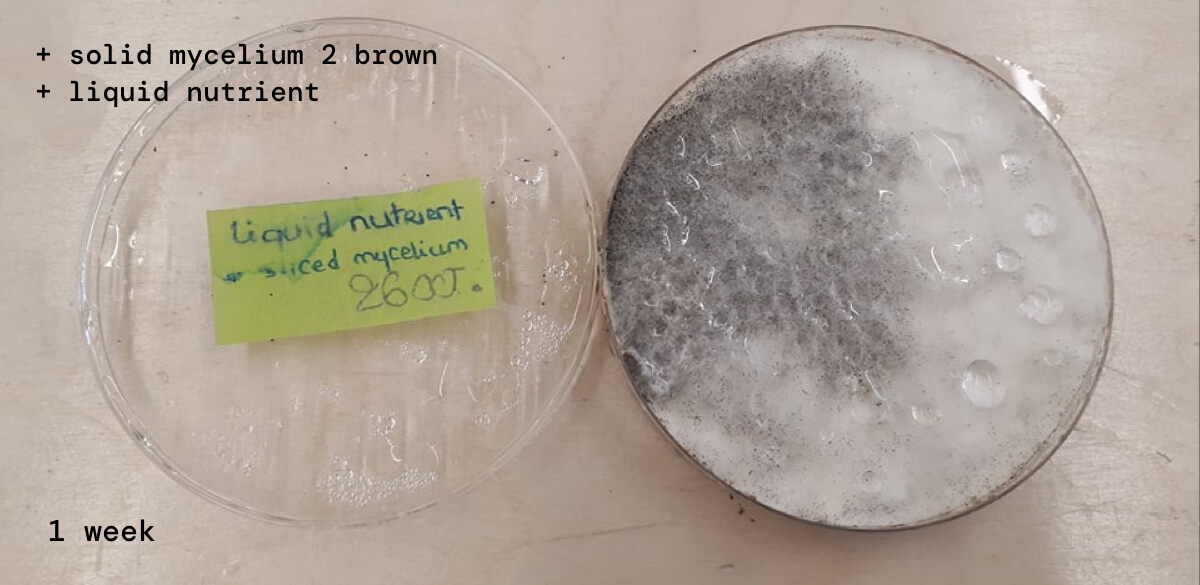
Mycelium + coffee + pine
--> I tried a random recipe mixing the following ingredients: coffee waste, pines, mycelium, liquid nutrient. I'm letting it rest at a temperature of 28C.
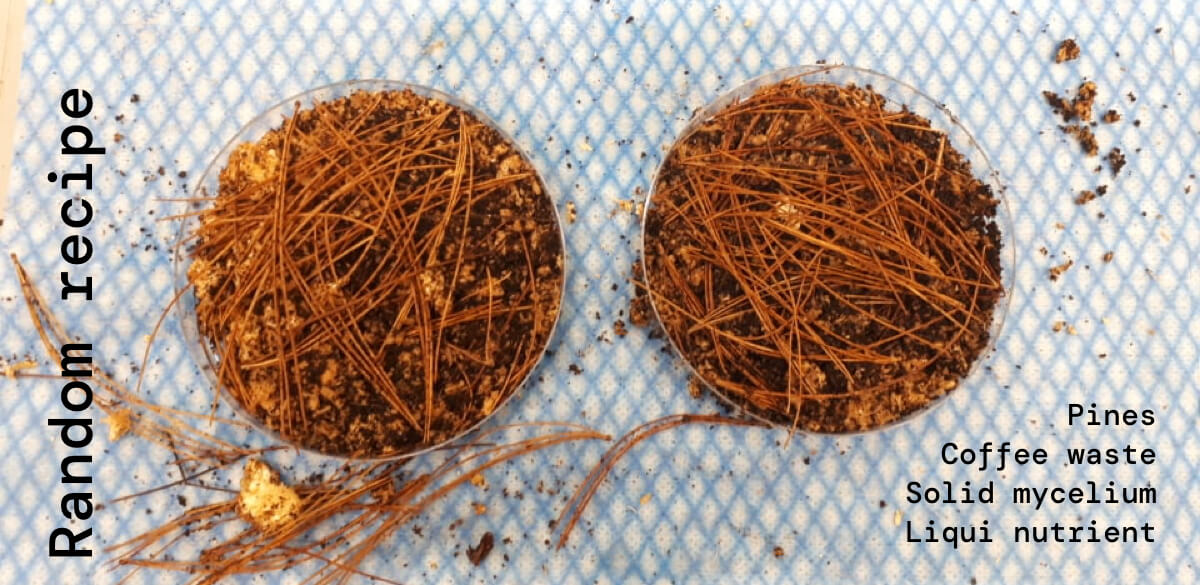
--> results lots of pines + coffee + mycelium

--> results coffee + mycelium + tiny bits of pines

Crafted materials
Alginate bioplastic
—-> I followed the alginate recipe. I did not let the alginate texture rest so there's bubbles in it. I added turmeric to dye the plastic (turmeric pigment made on week 4), and used both salt table and ice melter as substitute for calcium chloride.
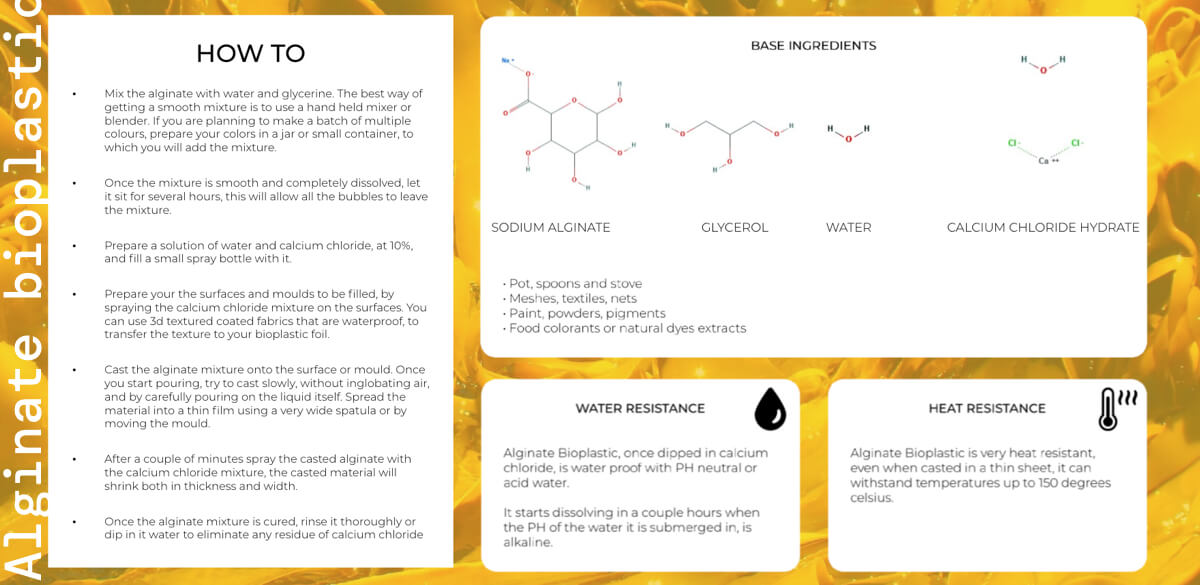
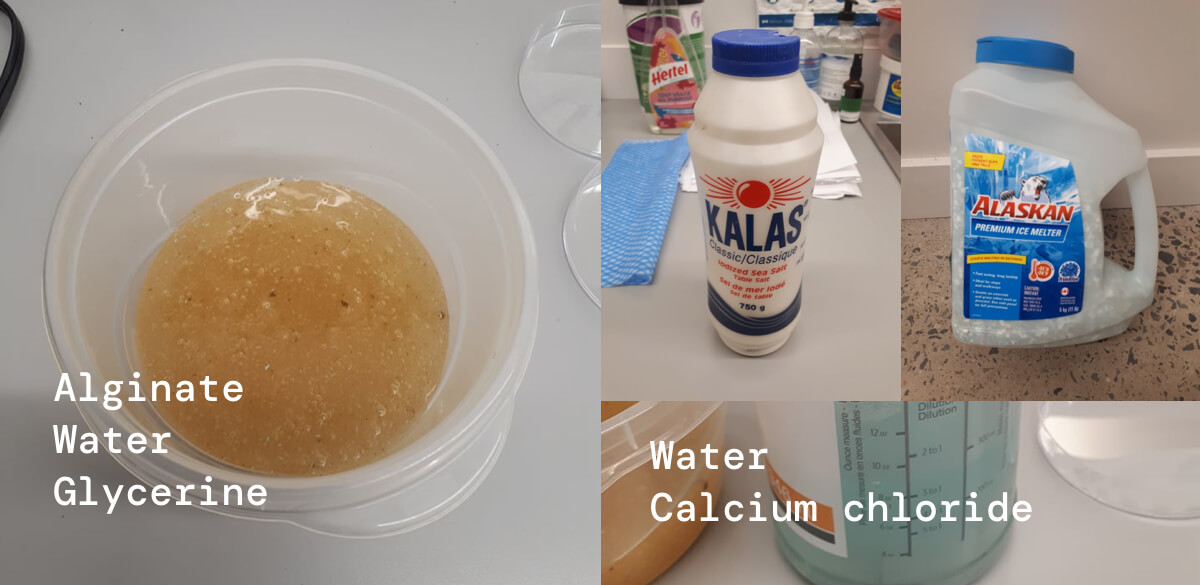
—-> Final texture is not strong, really feels like gummy bear:

--> Results after 1 week rest, it dried!
Gelatine bioplastic
--> I followed the gelatine recipe, a ratio of 1:1 gelatine / glycerin :
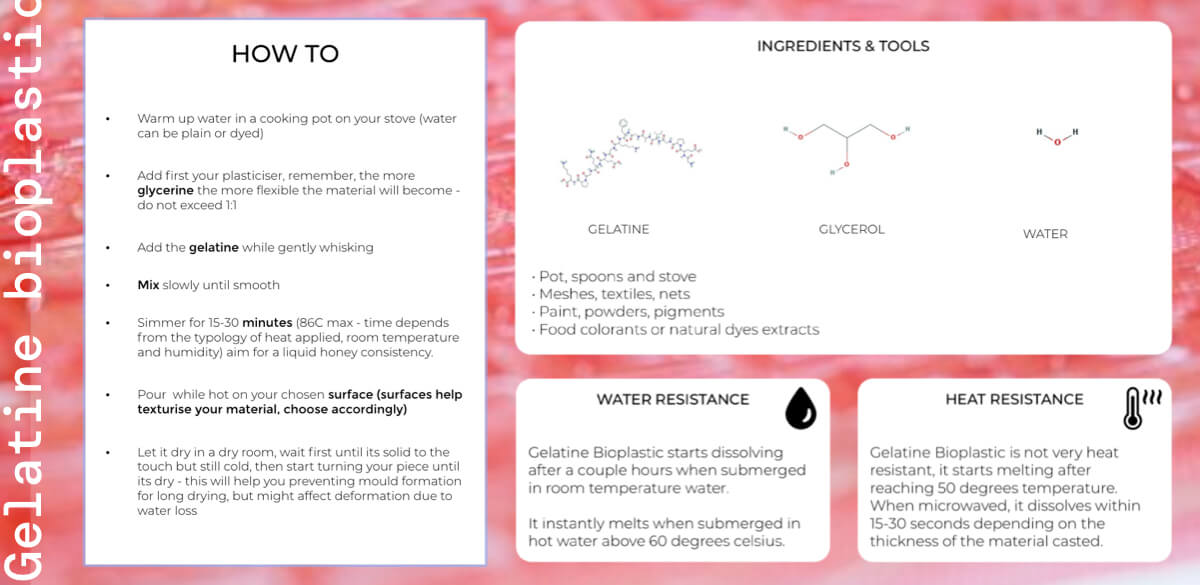
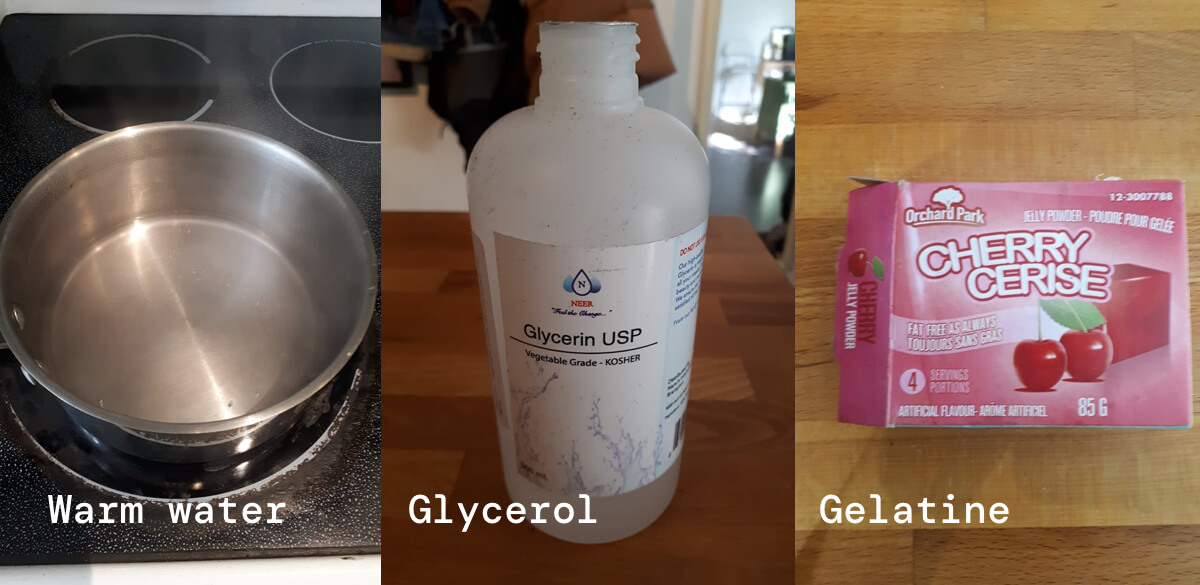

--> Results: it did not dry at all it stayed like a honey texture. What possibly went wrong, is that I was using Jello? Or I added too much glycerin.
--> I tried recooking it, but texture did not change, only the color, probably because it burned, this is after one week of rest:
Textile waste composite
--> For my final project I experimented on different recipes with textile waste, with in mind to make a solid block:

-
TEST101
Gelatin: 50gr
Glycerin: 10gr
Water: 400ml
Textile 100% cotton: 100gr
Notes: Mixed the textile mix and the ingredients in a pot for 2 minutes.
-
TEST102
Textile 100% cotton: 67gr
Water: 200ml boiling water + 60ml cold water mixed with cornstarch
Cornstarch: 40gr -
TEST 103
Textile cotton: 50gr
Water: 500ml
Cornstarch: 30gr
Notes: evaporated a lot of water while boiling -
TEST 104
Textile: 30gr cotton
Gelatin: 13gr
Water: 250ml
Notes: the composite is not thick enough, it breaks.
Useful things
--> Bioplastic cook book
--> Materiom
--> Remix El Barrio biomaterials recipes playlist
--> 24 core recipes
--> Biofabricating materials lecture
--> PeelSphere by Youyang Song
--> Elsa Gil documentation
--> Sarah Fdili Alaoui documentation
--> Amanda Jarvis documentation